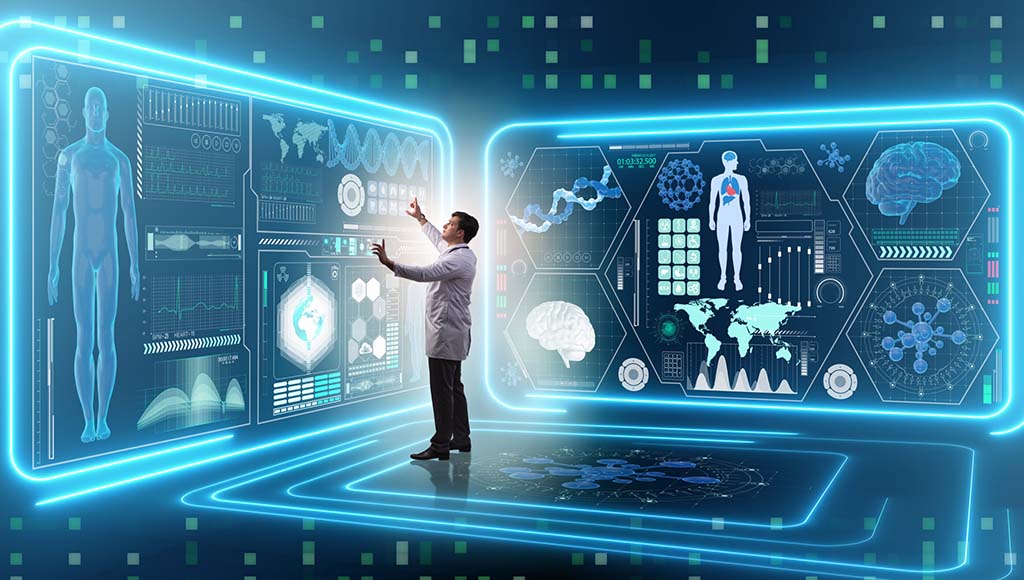3 Ways Technology is Shaping the Patient Experience
-
IntouchCX Team
- February 9, 2023

“In a highly competitive industry that relies on patient retention for ongoing revenue streams, health technologies need to expand their lenses past the point of purchase and ensure the end-to-end PX is optimized.”
Healthcare has changed significantly over the last decade, especially since the COVID-19 pandemic. New technology is transforming the industry as more patients expect experiences that align with their digital-first daily lives. Health leaders are realizing that improving the patient experience should be a top priority, whether virtually or in-person.
Patients want a streamlined patient experience (PX) that’s personalized to their individual needs. Innovations like telemedicine, virtual consultations, and mail-order RX make patient care more accessible and convenient, while wearable devices and AI technology improve the quality and accuracy of healthcare for patients. Health technologies can improve the patient experience across multiple touchpoints while encouraging patients to take a more active role in their health journeys.
So how can today’s health technology companies address this issue? Ensuring positive patient experiences at every point in the journey is essential. But that’s not as easy as it sounds. Many health tech disruptors are so focused on their new app, device, or capability, the patient experience becomes a secondary focus. In a highly competitive industry that relies on patient retention for ongoing revenue streams, health technologies need to expand their lenses past the point of purchase and ensure the end-to-end PX is optimized. Without a more holistic view, you risk falling behind competitors.
Below are the top technology trends driving patient experiences in 2023.
Top Health Technology Trends in 2023
- Virtual Healthcare & Telemedicine
The pandemic sparked the rise of virtual healthcare and telemedicine, allowing patients to receive healthcare online without risking public interactions during the height of the virus. However, the demand for telemedicine never stopped once restrictions were lifted. Instead, patients and providers alike realized the convenience and financial benefit of getting their health needs addressed without leaving their homes. However, health technology organizations need to actively address their PX to ensure patients feel valued while getting the same treatment as they would in person.
Remote healthcare can improve the patient experience by making healthcare more inclusive for people with a wide range of conditions and needs. Telemedicine can include video conferencing for routine health visits or even remote surgeries, both of which can make getting care more accessible to patients with limited resources. Additionally, patients have the ability to contact their physicians through online portals where they can get their questions answered quickly and efficiently. And with the help of language technology, patients can receive assistance in their preferred language with ease, contributing to a better customer experience.
- Internet of Things & Wearable Technology
The Internet of Things (IoT) has evolved immensely with sophisticated wearable technology that is transforming medical care and the patient experience. Some wearable devices can track fitness and activity, while more advanced innovations can monitor vital information like blood pressure to detect a possible heart attack or run complex scans like ECGs. And now, there are biosensors, including adhesive patches, that can reduce patient deterioration into cardiac or respiratory attack by up to 89%.
Today’s IoT innovations provide valuable information for providers to help them more proactively address their patients’ health and wellbeing, whether that’s detecting early warning signs of disease or managing a chronic health condition. Certain devices can even help patients monitor and manage their mental health by analyzing sleep patterns, activity levels, and more.
Wearable technology has become highly popular among consumers as it allows them to take charge of their own health on a daily basis. From watches to rings, smart wearable technology has created a booming market, with over 86 million users as of 2023. Self-care and wellbeing are priorities among consumers, and wearable devices allow them to use actual data to enhance their health outside of their routine care visits, leading to an elevated customer experience.
- Artificial Intelligence & Machine Learning
Artificial intelligence (AI) and machine learning (ML) will be extraordinarily influential for the healthcare technology industry this year, with the market expected to surpass $20 million by the end of 2023 and $28 million by 2024. Health technologies have become highly sophisticated to drive frontline clinical work, including tools to better analyze medical imagery, discover drugs and predict outcomes for clinical trials, and more. Additionally, health technologies are capable of streamlining clerical work in the medical field, helping to process insurance claims, analyze medical records, and communicate with patients more effectively.
The use of chatbots and automation are highly effective at increasing efficiency and reducing friction for the patient experience. Especially with the shortage of healthcare workers, these intelligent tools can help patients get their questions answered quickly 24/7 and allow practitioners to better delegate their time and expertise. With the help of AI language technology, patients can also get assistance in their preferred language, creating a more positive, personalized patient experience.
Be Proactive About Your Patient Experiences
Implementing innovative PX technology is a necessary tactic for health technologies and providers alike to improve the quality of patient experiences, both virtually and in-office. Learn more about our industry-leading customer care solutions here.
Learn how IntouchCX’s Strategic Solutions can optimize your brand’s customer experience today.















